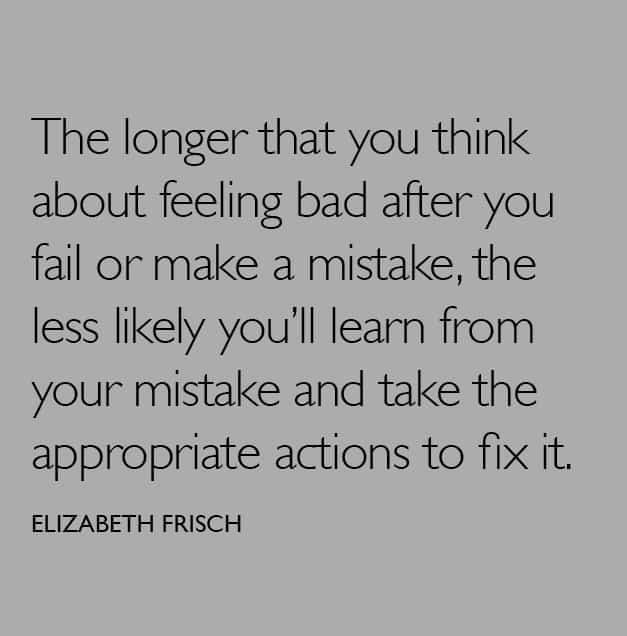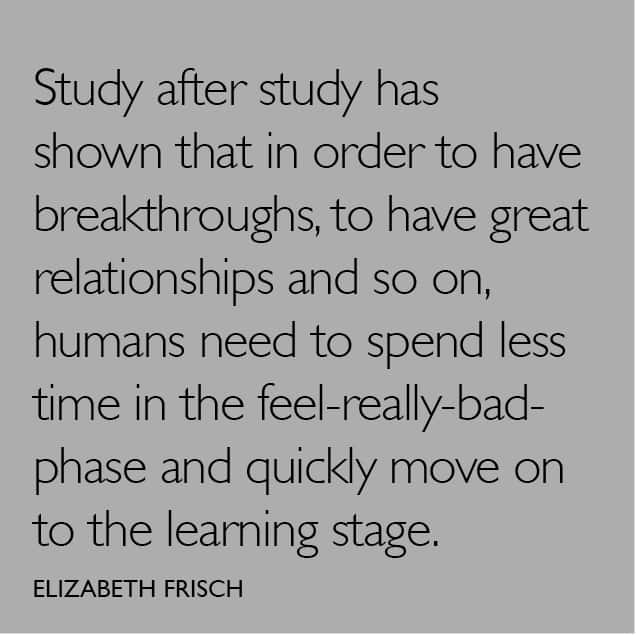If you’ve been following along with my “Defying Gravity Leadership Series” and practicing the empowerments that I’ve given you, you should be seeing some real changes starting to happen in your life. In the first empowerment, Define Your Views, you learned how to identify the view to move quickly toward a resolution quickly. In the second empowerment, Practice Daily Discomfort, you learned the necessity of living outside of your comfort zone to experience growth and change. Today, it’s time to talk about the F-word.
Empowerment 3: Mistake – Learn
We have a phobia with the F-word, and it’s not the one that came into your head first, it’s the second one: Failure.
Ironically enough, anyone you talk to in IT, anyone you talk to in entrepreneurial crowds, and anyone who has launched a company will tell you failure happens all of the time. Do we ever not beta-test something before it comes out in code? We rarely get it perfect at first—things fail.
As a society we are completely intolerant of failure. In fact, we teach our children in our schools that it’s not only not okay to fail, we make them feel really bad when they do. We’ve created a culture of people who can’t move as fast as they should, because the F-word is terrifying to them.
Public Lynching
When failure happens sometimes we have what I like to call “public lynching” of people in our agencies. The culprit can be just about anyone we can blame for the latest breakdown. Intentional or not, public lynching ensures that everyone is really good and scared of failure because they don’t want to end up on that screen like that other just person did. Then we all sit there and go shoulda’, coulda’ woulda’ for hours, days, or even months. It’s a huge waste of everyone’s time and energy.

We even do it to ourselves. Do you still feel bad about someone you broke up with twenty years ago? Yes? You’re not alone. Some of us never give up feeling bad—we have stuff that’s happened in our lives that we screwed up and we never let ourselves off the hook for it.
The Study Shows…
There’s a fascinating study that I like to reference that found:
The longer you feel bad after making a mistake, the less likely you are to learn and take appropriate actions on the outcome.
 I’m going to say it again in a different way: The longer that you think about feeling bad (sorry, shoulda’ coulda’ woulda’, bad thoughts) after you fail or make a mistake, the less likely you’ll learn from your mistake and take the appropriate actions to fix it or prevent a similar mistake or failure from happening again.
I’m going to say it again in a different way: The longer that you think about feeling bad (sorry, shoulda’ coulda’ woulda’, bad thoughts) after you fail or make a mistake, the less likely you’ll learn from your mistake and take the appropriate actions to fix it or prevent a similar mistake or failure from happening again.
What this means is, we’ve been taught to make a mistake and feel really bad about it to no end.
Study after study has shown that in order to have breakthroughs, to have great relationships and so on, humans need to spend less time in the feel-really-bad-phase and quickly move on to the learning stage.
The Practice
The practice that I am giving you to combat this is very simple: Mistake – Learn. In an organizational structure, depending on how dysfunctional your agency is, this looks deceptively simple.
Let me give you an example in practice. I was working with a company and every time something failed, they would all sit in a room to figure out who screwed up and then the manager would make that person or team feel really bad in front of everyone. Afterward, they’d scramble for ways to fix it, but not until after the whole feel bad part lasted at least one to two hours and sometimes even weeks.
And, invariably, I would get pulled into it because I was the consultant on the project and they always like to blame the consultant (that’s a rule and we accept it as consultants). At which point I said, “You know you’ve spent two and a half weeks figuring out who failed and yet you haven’t fixed the failure.” He kind of looked at me and he said, “Yeah!” To which I replied, “Next time there’s a breakdown on the project, can you just have the meeting and say ‘This failed’ and then go straight to the fix, and not waste time worrying about who was responsible?”
At their next post-breakdown meeting they worked it out in only twenty minutes. Twenty minutes versus two or three hours! If you do the numbers on that, three hours down to twenty minutes—that’s huge! At the end of the meeting everybody walked out in a great space. It went like this, “Oh yeah, that screwed up. Here’s what we all have to do. De…de…de… and here’s the check-in.” The emotion was taken right out of it, and suddenly, they went from a dysfunctional organization to a functional organization.
Five Minute Rule
The thing is, and why I said that this practice looks deceptively simple, is the fact that some people really like to make other people feel bad and some of you like to feel bad.
So, I have a rule: If you have to feel bad, if you have to apologize, if you really did screw up, you get five minutes. Set a timer. You have five minutes to apologize. Say whatever you want but after the buzzer goes off that’s it.
Same thing goes with employee evaluations. I just did an evaluation of one of my own employees and she sent me three pages of email of why she was so sorry she couldn’t meet all of her goals. I glanced through the email and I thought, “That took a lot of time for her to write a three page email.” So, I shot her back an email that said, “I didn’t even read this. It’s mistake-learn.” That’s it. I said, “I don’t need to hear how you feel bad, just send me what you’re going to do to fix it.” She sent me back a message saying, “Oh my god! I though you were so upset.” I replied, “I’m not upset. I just want to know how we’re going to move it. And if we can’t move it, then obviously we’ll separate ways at some point, but I believe we can move it.”
Again, huge time saver, so deceptively simple and works great.
Up Next
Phew! I’m glad we’re past the F-word and ready to move on to the next empowerment: The Story Versus What Really Happened. If you learn and practice what I am going to teach you, you will be the hero in your organization. Check back to learn how.







